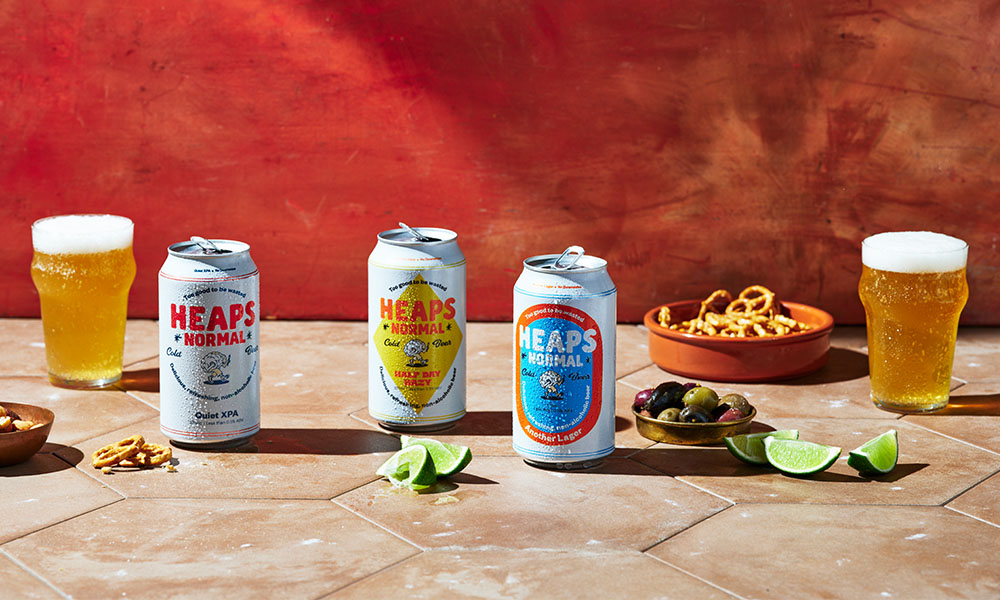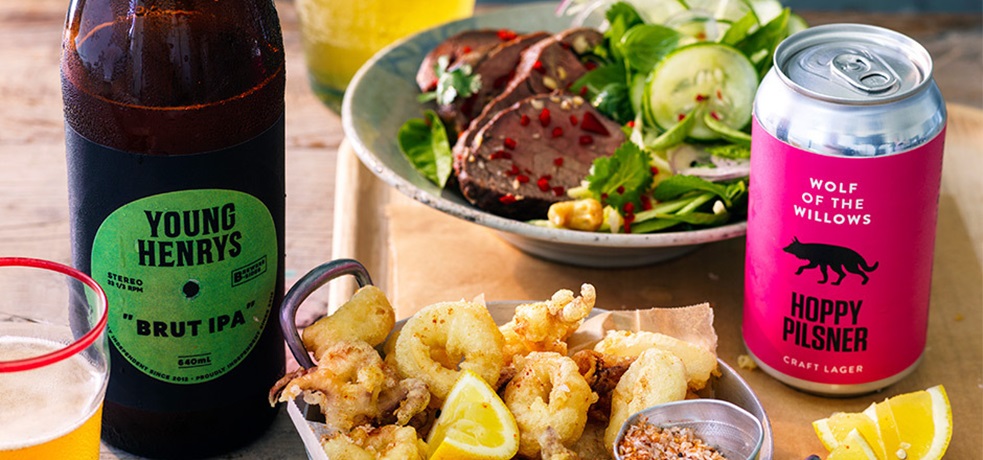

THE BREW
- The Brew
Beer Style Guide
Read Time 5 Minutes
Posted 31 Aug 2022
By winVintage
Budding beer aficionados, your time has come. Flavour is back, and brewing has never been better. In fact, there’s never been a better time to be a beer lover. The days of forsaking aroma for efficiency, flavour for consistency and mouthfeel for conformity are gone. Today, Australia is awash with so many sensational beer variations from here and abroad, it can be difficult for beer beginners to know where to start. That’s why we’ve compiled this helpful beer style guide to kickstart your beer journey. Cheers!


Wheat beer
Wheat beers (or witbier) are typically light lemon in colour (dark variations exist), effervescent and very easy drinking. They go down well in summer, with their distinctively tart, citric characteristics and smooth mouthfeel.
• APPEARANCE: Wheat’s higher protein content make them look cloudy with a white, thick and foamy, long-lasting head.
• AROMA: Ingredients such as a special strain of ale yeast give wheat beers fresh scents of orange, clove, coriander, vanilla, banana and sometimes bubble gum!
• FLAVOUR: Many lighter-coloured wheat beers are tart and zesty, slightly sweet, slightly spicy and a little tangy, too. Think orange peel and coriander, banana, oats and clove.
• MOUTHFEEL: A high level of wheat in the brew means a silky-smooth mouthfeel.
Pale ale
Pale ales sit between light lagers and dark ales. Expect a good balance between the malt and the hops. British styles tend to be malty, creamy and aromatic. American pale ales are crisper, cleaner and more hoppy, while Australian pale ales are maltier than the US style but less bitter due to their lower hop content.
• APPEARANCE: Pale gold or deep amber. A medium to large, frothy off-white head laces nicely on top.
• AROMA: Hop aromas are typical. Citric and foral scents are supported by bready, biscuity malt characters, offset by stone fruit and grassy perfumes.
• FLAVOUR: Strong citrusy hop characters linger. Malt plays a supporting role; crackers, rye bread and caramel notes balance the bright, citric hop bitterness.
• MOUTHFEEL: Medium to light bodied. Moderate to high carbonation.
IPA
This style is a huge, hop-forward, bitter Indian pale ale, created in 19th-Century England to survive the long boat ride to India.
• APPEARANCE: Often pours clear with colours running from gold to red-hued amber, and a white to off-white head.
• AROMA: An IPA’s aroma should burst from the glass bombarding you with intensely complex scents of citrus and pine, oral, tropical and stone fruits. Sometimes resinous, sometimes spicy, but always fresh, big and bold.
• FLAVOUR: Not a lot of malt, but plenty of hops. Think citrus, spice and orally flavours, fruits like melon, lemon, berry and pine. These big flavour combinations make it one of beer’s heavy bitters.
• MOUTHFEEL: A decent IPA is refreshingly bubbly, medium bodied, and finishes a bit bitter and dry.

Golden ale
Made for lager drinkers who want a little more flavour, golden ale is a great alternative to your standard summer beer.
• APPEARANCE: Golden straw, brilliantly clean and clear, topped by a subtle head due to mostly moderate carbonation.
• AROMA: Tends to be the more refined, more balanced, less intense scent of herbal, oral and earthy citrus. Sometimes there’s more honey, spice and sweet fruit up front.
• FLAVOUR: Big on balance, there’s sweet satisfaction in this easy, breezy brew. You’ll taste more sweet cereal, white bread and biscuit characters, balanced by slightly zesty citrus and some hoppy bitterness.
• MOUTHFEEL: Light to medium-bodied, round and smooth, like a more delicious, refreshing and interesting lager.
Amber ale
Slightly darker than golden or pale ale, amber ale is a beautifully balanced beer that sways from quite hoppy to fairly malty.
• APPEARANCE: Amber coloured with tones of tinted copper, red and brown, capped by a lively, frothy, off-white head.
• AROMA: Complex and nuanced with malty, caramel sweetness from the roasted crystal malts up front, with a pleasant shadow of typically spicy, oral, berry and stone fruit hop characters for brightness and balance.
• FLAVOUR: Hops shine over and above the malted toffee, nuts and caramel. A zesty citrus character is common, sometimes with more berry, melon and spiced hop charm, which can be quite bitter if pushed into IPA terrain.
• MOUTHFEEL: More body, smoother and warmer, courtesy of a higher ABV than a typical pale ale.
Stout
Stouts are big and strong. American stouts have more hops than English ones, which can have a roasted malt presence. Australian stouts often mirror the English style, although American influences are also emerging.
• APPEARANCE: Very dark brown, verging on black. Hard to see through, and typically topped by a persistently creamy tan to dark brown head.
• AROMA: Scents range from robust roasted malts and grains, bread crust, toast, tea and coffee, to cocoa, caramel and chocolate, liquorice, tobacco and burnt ends.
• FLAVOUR: Dark roasted malts dominate. Heavily hopped bitterness lends freshness to heavier, richer, stronger, darker and dryer flavours.
• MOUTHFEEL: A smooth, rich and creamy texture from low carbonation.
Dark ale
Serious beers meaning serious business, with dark ales typically being big and rich with lots of tasty, brooding flavours.
• APPEARANCE: Many pour dark to black with a frothy tan to deep brown-coloured head.
• AROMA: Usually features complex perfumes like bread crust, coffee, cocoa and chocolate, often caramel, and sometimes treacle.
• FLAVOUR: Malts tend to anchor the flavour around roasted notes and flavours, more coffee or toffee, sometimes ashy or burnt sensations, and plenty of dark chocolate. Hops often provide a zesty, resinous bitterness to keep the beer fresh.
• MOUTHFEEL: Depending on the style, dark ales can be quite light, such as a black IPA or schwarzbier (dark lager), or quite smooth, creamy and warm, like a bock or porter.
Sour beers
Almost extinct two decades ago, sour beers are back with a vengeance. The most popular is the saison or farmhouse ale. French for “season”, saison is a funkier version of a pale ale.
• APPEARANCE: Variable, although most are hazy and cloudy with a thin, fast-fading head due to the high levels of acidity.
• AROMA: Again, variable, but typically, you’re likely to detect a complex array of funk and sour scents that are at first strange and unusual, but thrilling and inviting at the same time.
• FLAVOUR: They can taste weird and wild at first, but curious, then interesting, moreish, and ultimately, delicious. Often spicy, citrusy, tart and sometimes vinegary, a good sour beer will be balanced and refreshing.
- The Brew
- View More Posts The Brew






